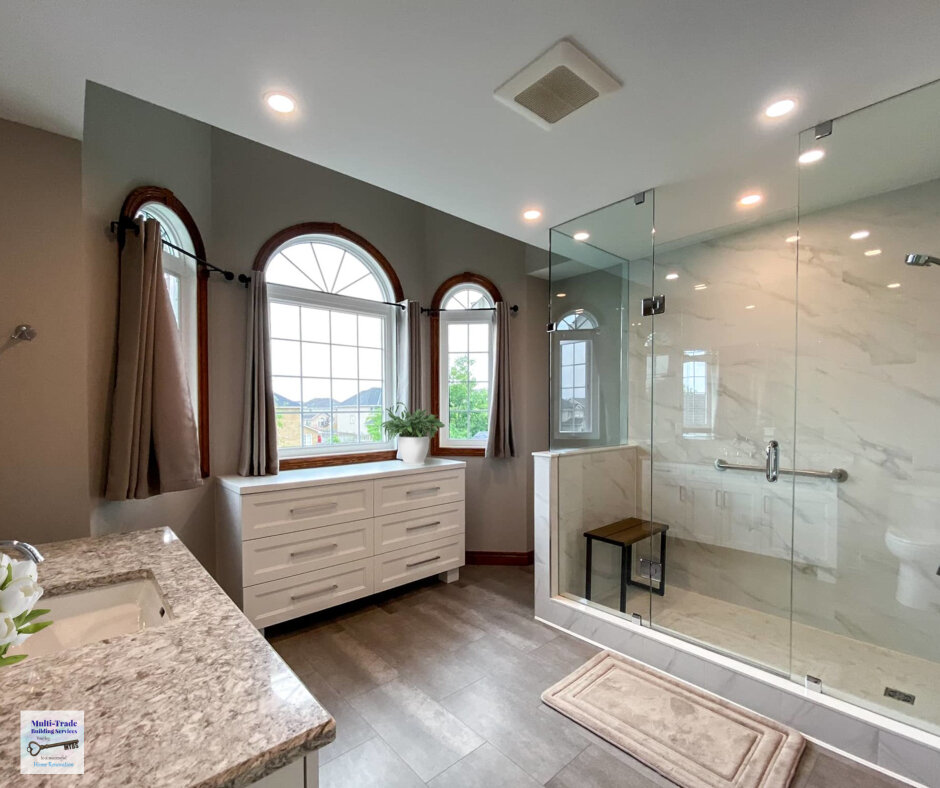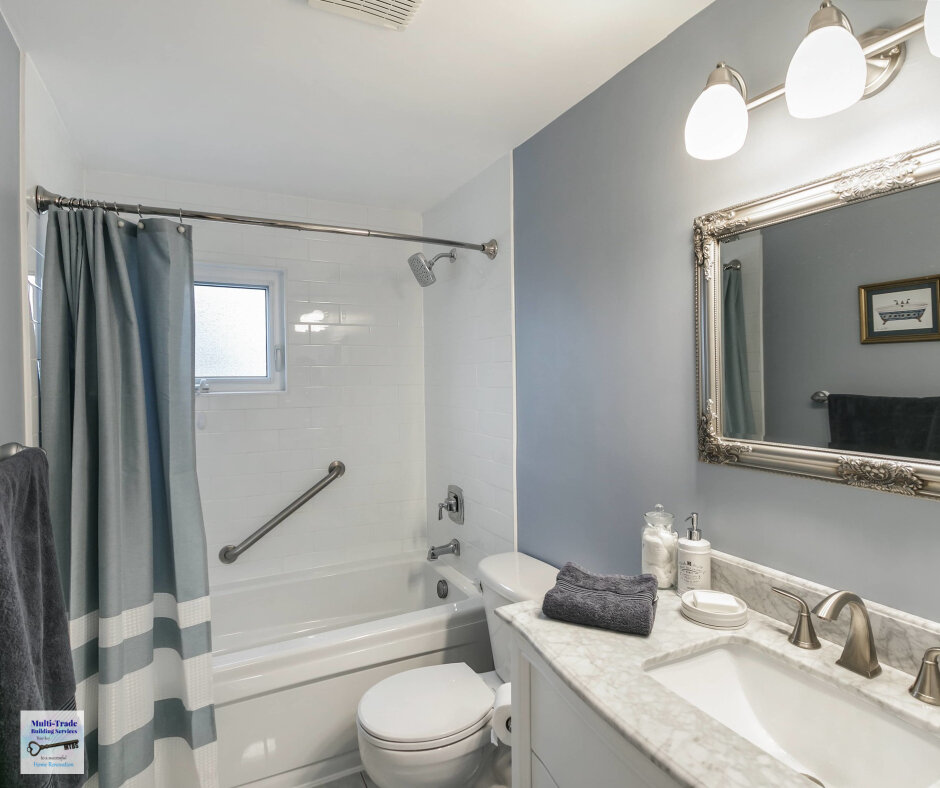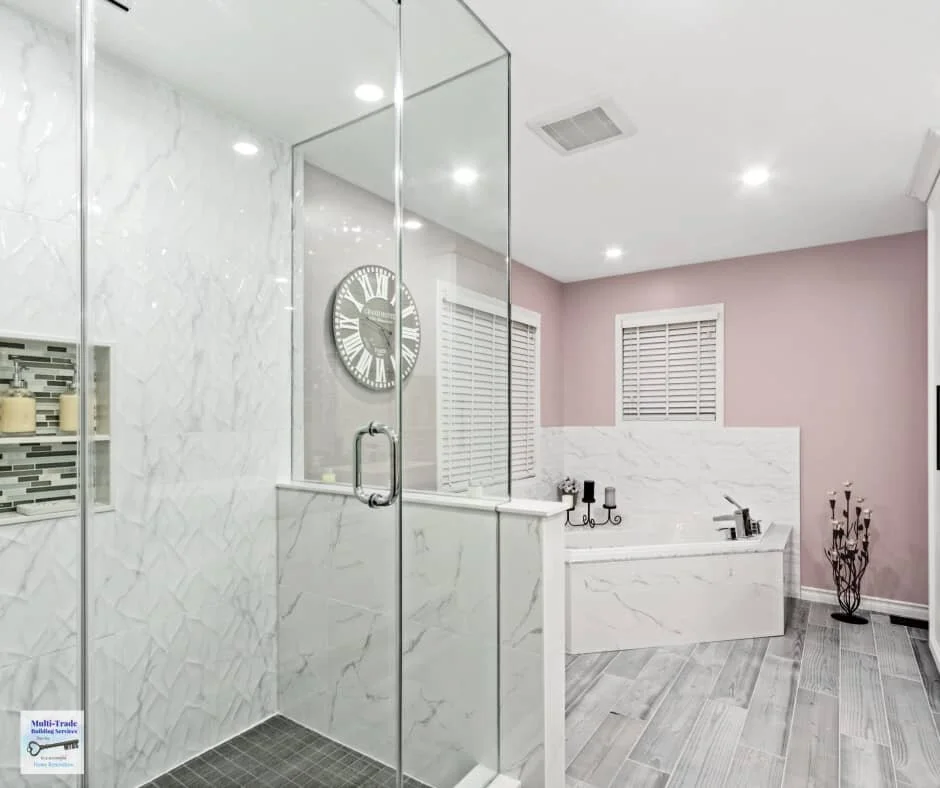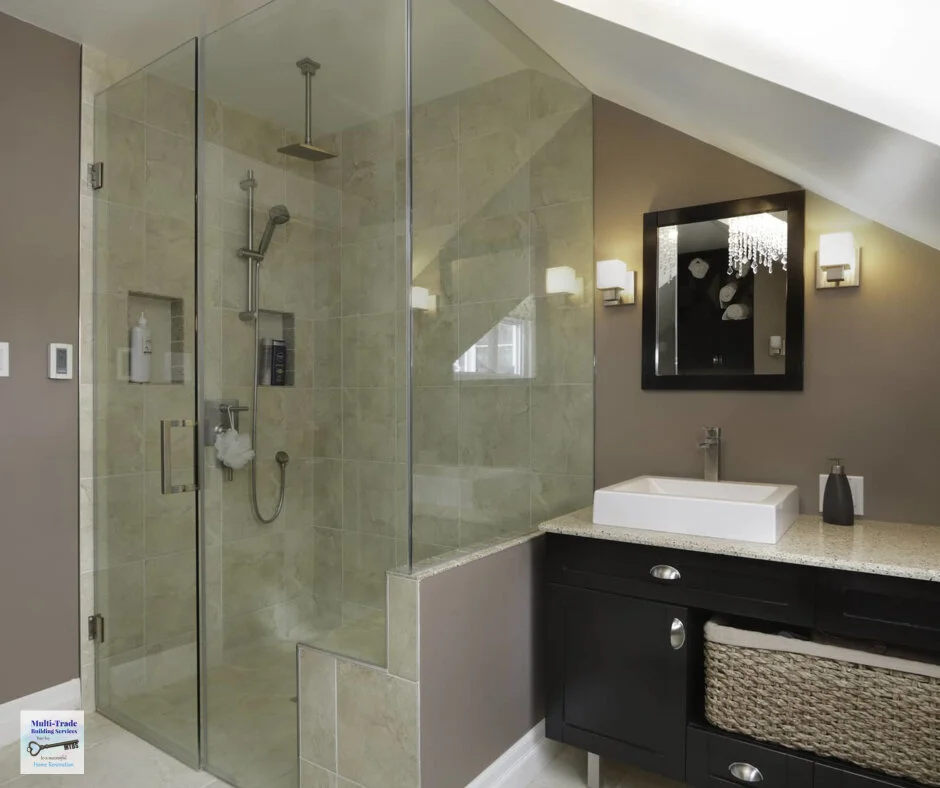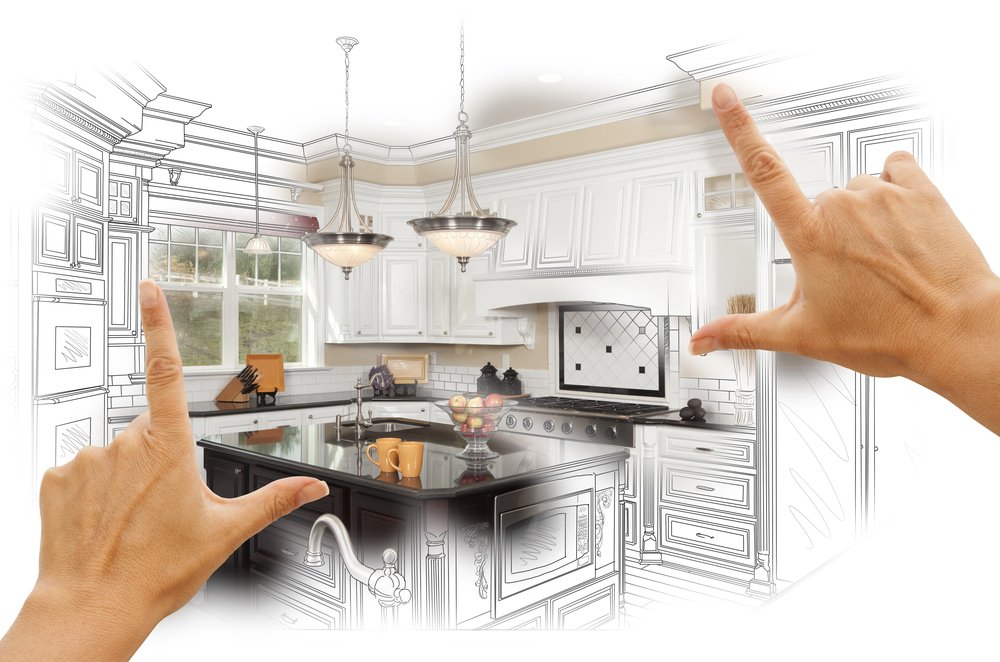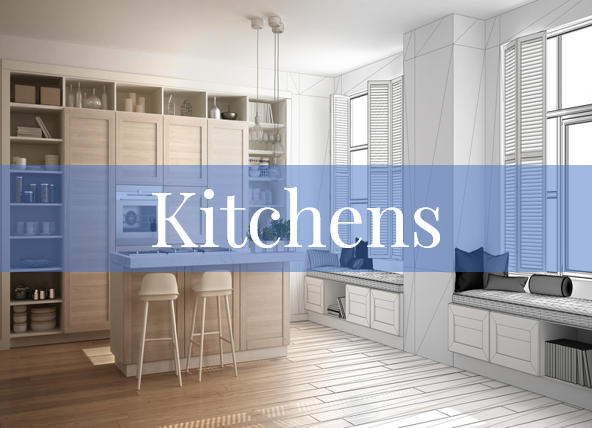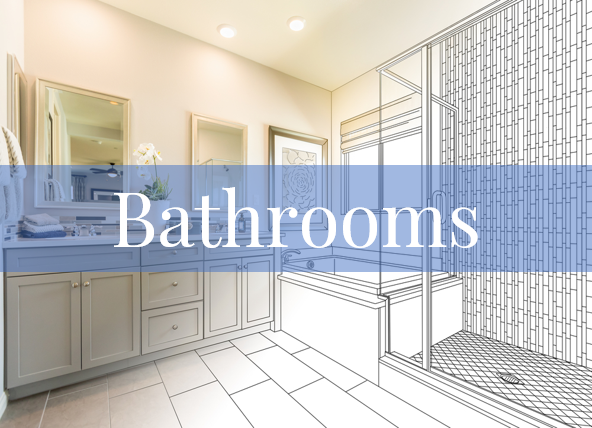7 Must-Know Tips for Renovating Your Bathroom
/Bathrooms are probably the most popular renovation project homeowners undertake. Updating your bathroom adds value to your home, and because it is smaller than a kitchen, it is an easier project to do. It’s important to strike a balance between your creative and aesthetic wants and your functional needs. We discuss our top 7 must-know bathroom renovation tips to ensure you have a successful project!
Your bathroom should be a reflection of your personal style while still delivering the comfort and function you need. By combining some careful planning, hiring the right contractor, and purchasing the ideal fixtures, you can create your dream bathroom.
Prefer to listen?
1. Create a realistic budget.
There are many things to consider when creating a budget. How long will you be living in your home? If it’s only for a few years, then your renovation might be more cosmetic and on a smaller scale. If you’re planning on staying for 10 years or more, then you can invest more, as you will get a greater return on that investment.
What is essential to be done, and what is a luxury? You might really want that heated towel rack, but if your budget is tight, you can do without it. Turning that tub into a walk-in shower might be essential if mobility is or might be an issue in the future.
Do you need to relocate fixtures in order to make the space more functional? Think about the current flow in your bathroom. Does it work for you? Would the vanity be better in a different location? Would it be better to eliminate the corner drop-in tub and put the large walk-in shower there instead?
What can you truly afford? You don’t want to take out a second mortgage to pay for a bathroom renovation. This is one of the biggest issues I see when we meet with new clients for the first time. Often times, they have champagne taste on a beer budget. One of the best ways to deal with this is to make a list of your wants and needs when it comes to your bathroom renovation. If the prices you’re getting for your dream bathroom are just higher than you can afford, then it will be easy to eliminate some of those wants in order to get your needs fulfilled.
The price of your bathroom renovation shouldn’t be looked at simply as an expense. It is an investment in your home. You can expect to get a 70–80% return on your investment. For this reason, it’s worthwhile to do it right and do it once. Think about your budget and make sure it’s realistic.
2. Set aside a 20% contingency for the unexpected.
Particularly in bathrooms, you never know what you’re going to find behind the walls. If you’re doing the renovation because you’ve had mould issues or leaks, you could find actively leaking pipes or mouldy studs behind the walls. You’ll want to ensure you have enough in the budget to fix these things properly.
Also, you may decide that you really want that waterproof LED pot light in the shower that you initially said you didn’t need. Or what about that gorgeous accent tile you found that’s $25 a square foot? If you don’t allow for a contingency, you may end up not being able to address issues that come up or get items you really want to have for the bathroom.
3. Keep it classic, not trendy.
You may be tempted to go with the latest trend, but the best way to renovate a bathroom is to opt for the classic and accessorize with the trendy. This means selecting classic vanities, such as a white shaker-style design. Select classic tiles for the tub, shower, and floor, such as a simple subway tile. You can always opt for a 4x12 or 4x16 tile for the tub and shower to add a modern touch to the classic. Opt for 12x24 neutral tiles for the floor or select neutral luxury vinyl plank flooring. Pick a trendy colour of paint or a trendier countertop. These are things that can easily be changed for very little cost if the trend goes out of style.
4. Don’t skimp on the lighting.
I always say you can never have enough lighting in a bathroom or kitchen. These are two rooms in your home where you do tasks that require adequate lighting with no shadows. At the very least, I recommend a light in a shower or tub and a good, solid light at the vanity. Particularly at the vanity, you want to ensure you don’t have shadows as you’re fussing with your hair or make-up. My recommendation for lighting in a bathroom is a combination of LED pot lights and some decorative yet functional lighting. For example, depending on the size of your bathroom, you could install 2-3 LED pot lights throughout the main space, a waterproof LED pot light in your shower, sconce lights on either side of the mirror at your vanity, and a gorgeous (maybe even blingy) hanging light in a strategic place in your bathroom (e.g., over your tub or in the middle of the room). This allows you to layer task, accent, and ambient lighting.
5. Resist the temptation to vastly change the plans once the project has started.
Change orders are expected on renovation projects. It’s so much easier to visualize things as they are happening. An extra pot light, adding a shower niche, or deciding to add a backsplash to your vanity are all items that can easily be added to a project. However, deciding to change the locations of fixtures once the project starts or altering the size of the shower after it’s been framed and partially tiled can really delay the project and add a lot of cost.
We had a client many years ago who hired us to renovate his whole house. He was a project manager and worked out of town a lot. He’d come home on the weekends, see what was done, and decide to change things. This added a lot of cost to the project and massively delayed its completion. It left our team extremely frustrated because, although the work was being paid and the client accepted this, it meant that projects we were supposed to start after his kept getting delayed. It got to the point that our team dreaded Mondays for fear of what notes would be there requesting drastic changes.
A few changes and requests are to be expected, and the larger the project, the more changes your contractor will expect. However, it can be very frustrating for those working on site when the changes are constant and never-ending.
6. Install a new exhaust fan.
If you don’t have an exhaust fan in your bathroom, as long as you have a functional window, your bathroom meets the Ontario Building Code. However, I can’t stress enough how important it is to have a functional exhaust fan as well. It helps to eliminate humidity from the bathroom, which can cause paint to bubble and damage vanities. If you currently have an exhaust fan, make sure it works effectively.
Read my blog post on this topic for step-by-step instructions on how to test your exhaust fan. If it doesn’t pass the 3-piece toilet paper test, then get it replaced. This is one area you don’t want to ignore.
I also strongly recommend installing a 30- to 60-minute timer. A common problem with exhaust fans is that people will turn them on after they have their shower, but as soon as they are dried off and ready to leave the bathroom, the fan gets turned off. There’s still lots of humidity left in the bathroom. The way to avoid this is to install a timer and set it for 30–60 minutes, depending on how long and how hot your shower was. You don’t have to remember to turn it off, and you’re guaranteed to eliminate the humidity.
7. Don’t make the toilet the first thing you see in the room.
This one seems obvious, but it’s something you don’t always think about. When you are planning a new layout for your bathroom, make sure that when you open the door, the first thing you see is something beautiful, such as a vanity or shower. You don’t want to open the door, and all you see is the toilet. That’s something that you want to put out of the way, such as behind the door.
A bathroom renovation is definitely an investment in your future, as you will be increasing the value of your home. Careful planning and selecting the right contractor to work with (not necessarily the cheapest!) are keys to a successful renovation.


